Some Chinese product designers really know how to innovate.
Beyond all my very real concerns about the Chinese language, culture, and people’s perceptions of me, there’s one last thing I want to share about my China experience: the things I bought every day.
I actually think that making purchases with foreign currency, especially buying things that you never could at home, really heightens your awareness of being in another culture. Even three years later, I still remember that my first purchase in China was an umbrella because it was raining when I got there.
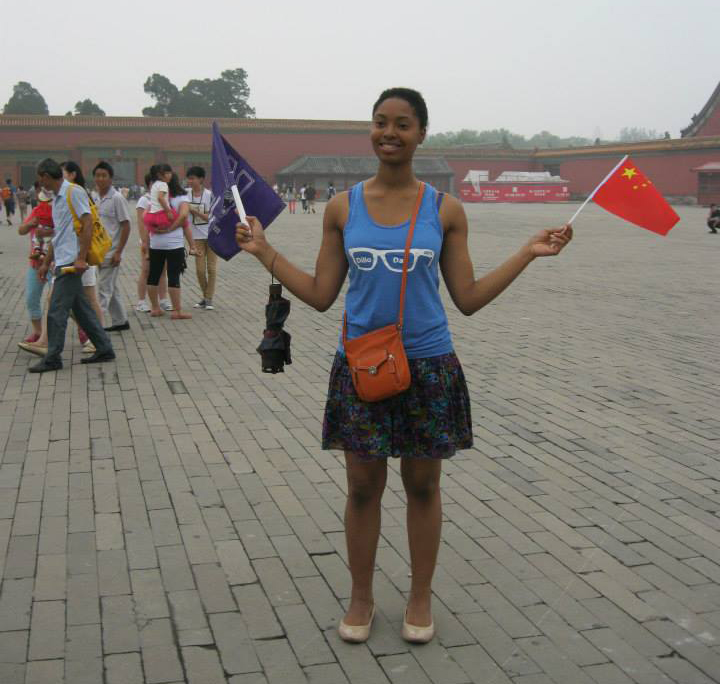
There it is hanging off my right arm, a fashionable companion in the Forbidden City.
Now I know that probably sounds boring and innocuous, but I learned something new about China right then and there: they are pretty into umbrellas. They come in a variety of styles and patterns that you’d only be able to find for a premium in the U.S., but the nice plaid number I picked up was only about $5.
I think it comes from the fact that people have umbrellas out on the street all the time (they’re used to protect from both the rain and the sun) so they prefer that that they look nice.
Shortly after my umbrella purchase, I went to eat my first meal in China with the rest of my program (pictured below). It was there I realized that my chopsticks skills were abysmal—vegetables and tofu can be a bit slippery for amateurs—and I was inspired to improve ASAP. Once I got that down, I was able to start appreciating the food.
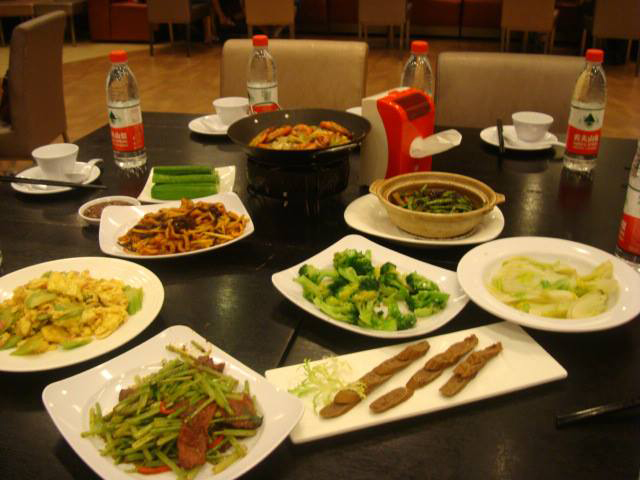
You’ll have two choices: 1) Become a chopsticks expert. 2) Starve.
In my experience, meat and eggs feature quite prominently in Beijing cuisine, and are prepared very differently than what you’d usually encounter in America. As well, white rice and/or a noodle-based dish were present at virtually every meal (actually, I can’t think of a single time when they weren’t present but I try not to speak in absolutes).
Designated dessert foods were uncommon; if anything, waiters would bring a plate of fresh fruit at the end of the meal. Overall, I’d say sweet foods are stressed less in China and savory foods more.
And just for the record, American Chinese food and authentic Chinese food are very different, there’s no getting around that.

A food stand where they sold fried starfish, seahorses, and scorpions. Not what you’d find on a standard Chinese dinner table, but the opportunity’s there if you’re feeling adventurous.
Chinese Foods I’d Recommend Trying:
- Jianbing (a kind of savory, stuffed crepe that you can pick up at a street cart)
- Peking duck (the classic)
- Chinese pastries (I loved visiting the little bakeries)
- Baozi (a steamed bun filled with meat and/or other foods)
- Soup dumplings (also known as “xiaolongbao” = “little dragon buns”)
- Eggplant-based dishes (a crowd favorite on my program)
- Ramen (not traditionally Chinese, but good if you’ve only had cup ramen before)
I loved all the different types of Chinese cuisine I tried, and before I left I knew it was one of the things that I’d miss most. However, there were a few points when I started craving food from home.
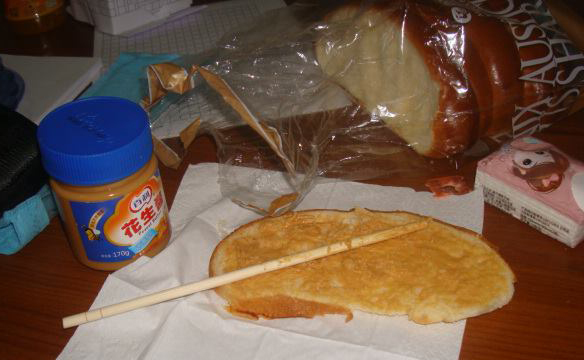
My sad attempt to enjoy a comfort from home.
The photo above documents my attempt to make a peanut butter sandwich. I think I paid at least $5 dollars for that tiny 6 oz. jar, the most appropriate bread I could find at a bakery ended up being super sweet, and when I got home I realized that I didn’t have a knife and had to get creative with a chopstick.
Moral of the story: Don’t go to China planning to enjoy typical American foods all the time.
One small warning: going back through my Facebook album of this trip, I found this photo captioned, “Never before had I been so happy to receive a meal with vegetables until this day.”
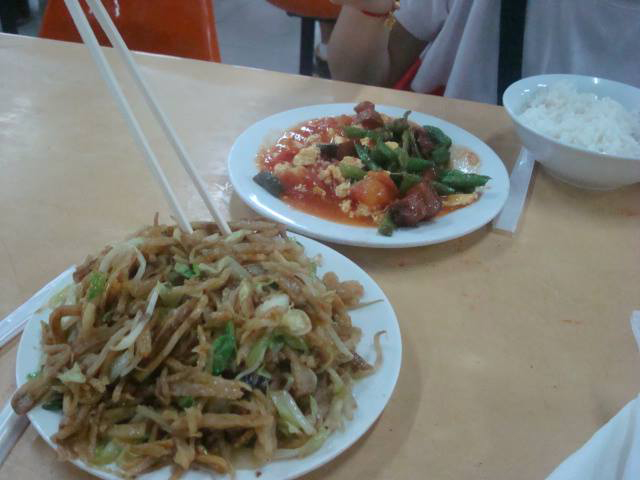
This photo is obviously not to demonstrate how good Chinese food looks, but check out those vegetables.
Much as I enjoyed virtually every meal I had in China, I found that meals with vegetables could be few and far between, especially when eating out as frequently as I did. One of my vegetarian friends temporarily started eating meat again during her time there, and two others, who couldn’t do the same for personal reasons, ended up losing a bit of weight.
It’s not impossible to find vegetables/be a vegetarian in China—you certainly won’t go hungry—but be aware that it can be a challenge. Sometimes vegetable dishes even unexpectedly came with a bit of meat mixed in, so be on the lookout.
Of course, your options will vary depending on where exactly you find yourself. (And on the flip side, this situation is great for all the meat-lovers out there.)
Shopping Adventures in China
Now on to non-food-related shopping. In general, I’m not a big shopper at home—I spend my money on food, books, tea, and not much else. In China I got a little more into it because everything felt new and exciting (like the umbrellas), however this part will be a little more brief.
One thing of note is that there is a much stronger “cute” aesthetic in China. There’s a lot more cartoon-ish branding, from the pack of napkins in the photo below, to the graphic tees you can pick up in the markets.

I got a real kick out of the cute branding styles.
Speaking of the markets, I would say that I found those to be one of the biggest cultural differences between China and the U.S. Markets are essentially clusters of tiny shops that sell pretty much everything, and they can be found found anywhere from large shopping mall structures to out-of-the-way side streets (which are called “hutongs”). I’ve never seen anything like them in the U.S.
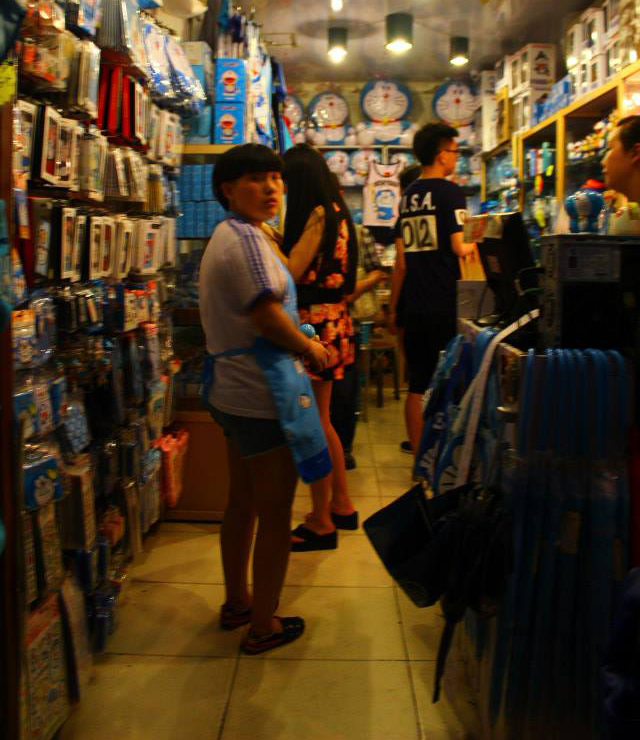
Different markets across Beijing were filled with these hundreds of tiny shops selling anything you can think of at whatever price you can bargain them down to accepting.
In addition to idiosyncratic Chinese products (both traditional and modern) such as qipaos and paper fans, you’ll also find many knock-offs of Western brands. My personal favorite was the time my friends and I stopped at a stand on the way to dinner and found a pair of jeans branded both “Gucci” and “Lamborghini.”
Maybe they have a partnership I’ve never heard about, but either way my friends and I thought it was so funny that we snuck a quick photo of them.
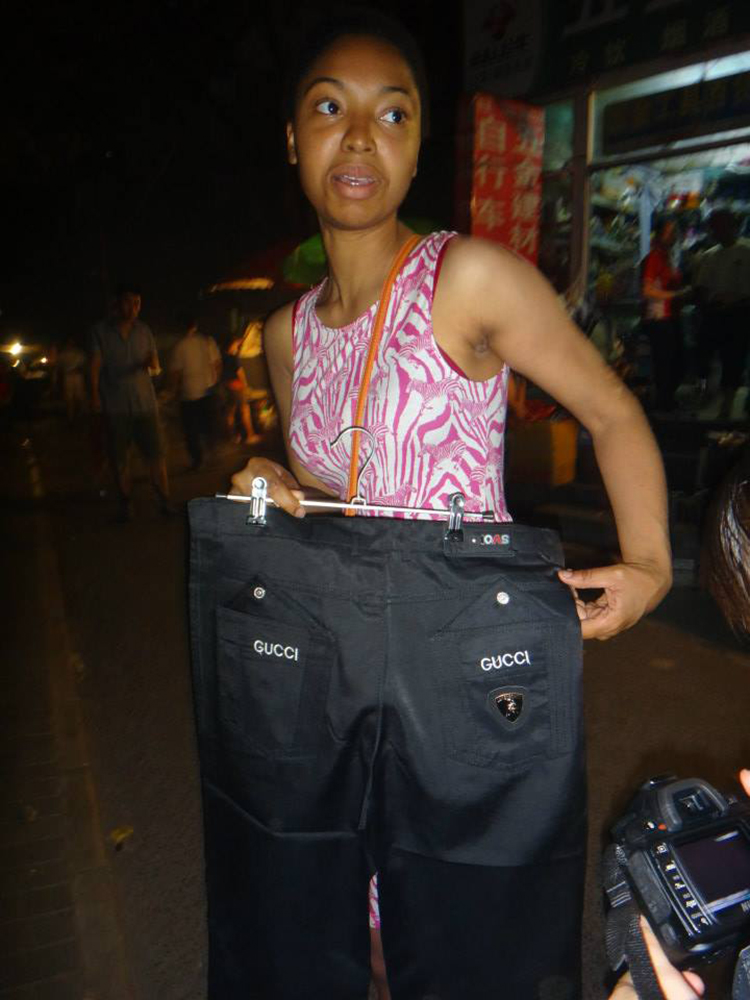
The famed “Gucci-Lamborghini” jeans (also dubbed the “Old Face Shanelle photo” by my friends). They were a steal at around $10 USD, but unfortunately didn’t come in my size.
One more thing: at markets, you can almost always bargain down the prices because they aren’t formal stores with set prices or tax. And if you look like a tourist, they’ll probably give you an initial charge that’s higher than they’d try otherwise.
What you need to bargain is a strong sense of the numbers in Chinese, and maybe a strong sense of self so you can stand your ground. Give up too easily and you might get taken advantage of, push too hard and they might get insulted and decide not to sell to you at all.
Personally, I rarely tried it myself. Either my friends (who were heritage speakers of Chinese) would do it for me, or I would just give in without a fight. As it happens, even the heightened “tourist prices” were pretty inexpensive—one of my most complimented dresses from China only cost me $3—so I didn’t mind them making a little extra money off of me. So you can go either way, but it’s good to at least witness for the experience (and the thrill).
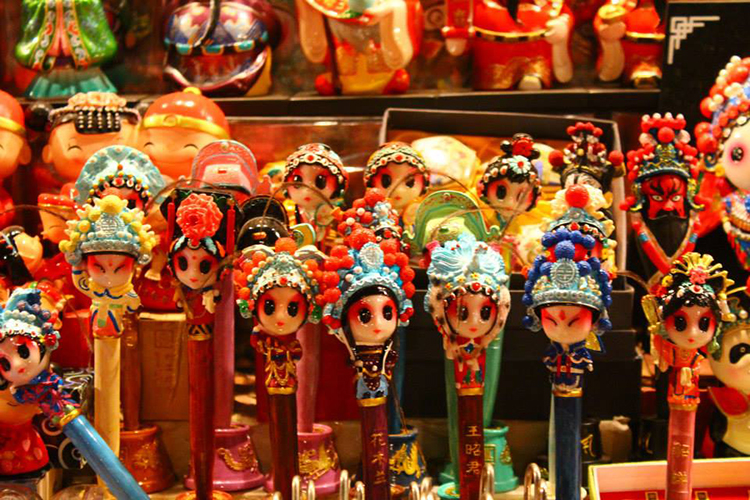
These pens are topped with traditional Peking opera figurines—little things like these are easy to find and great to pick up as souvenirs!
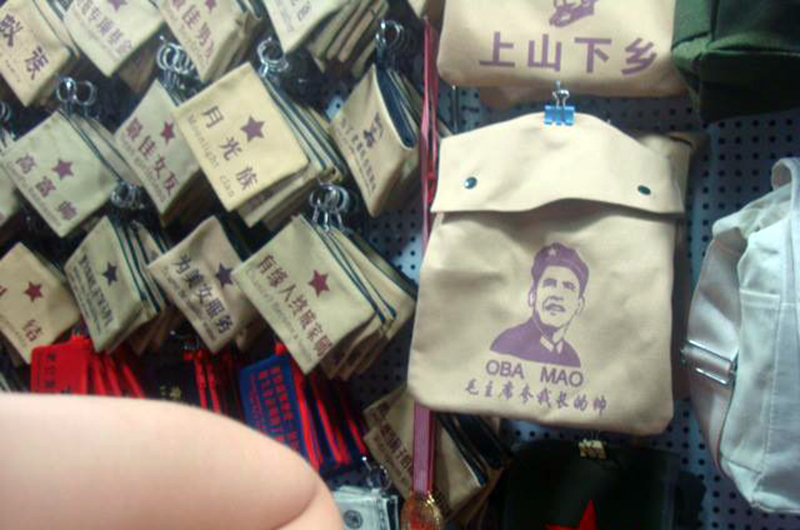
Leave a Reply